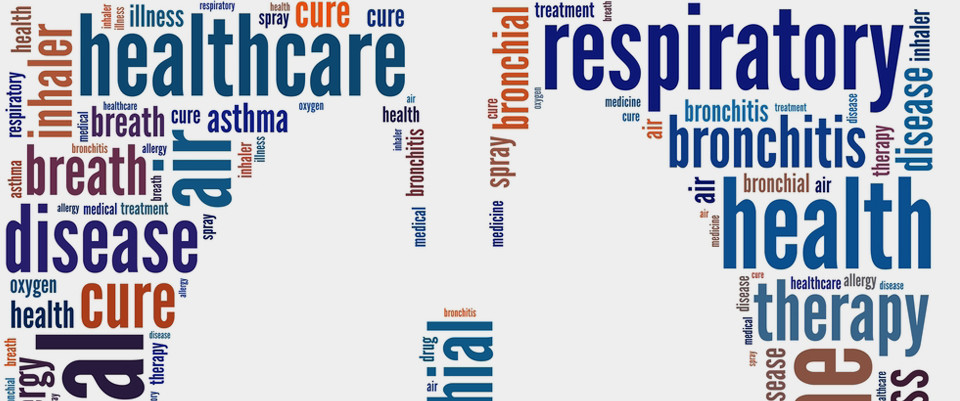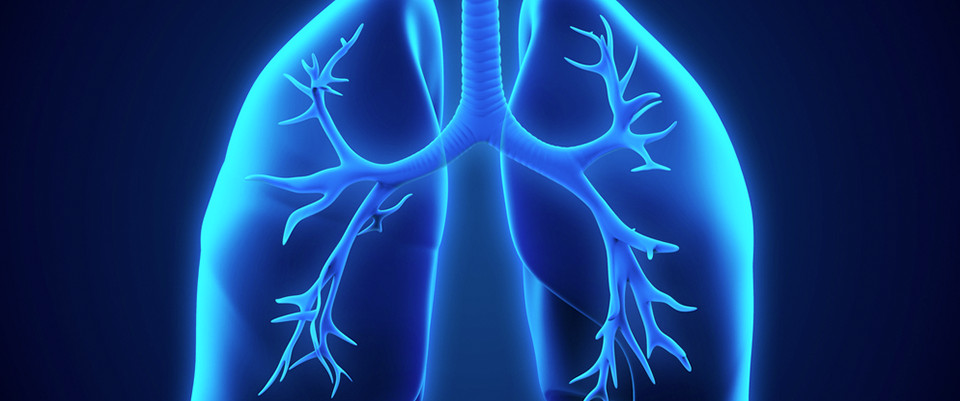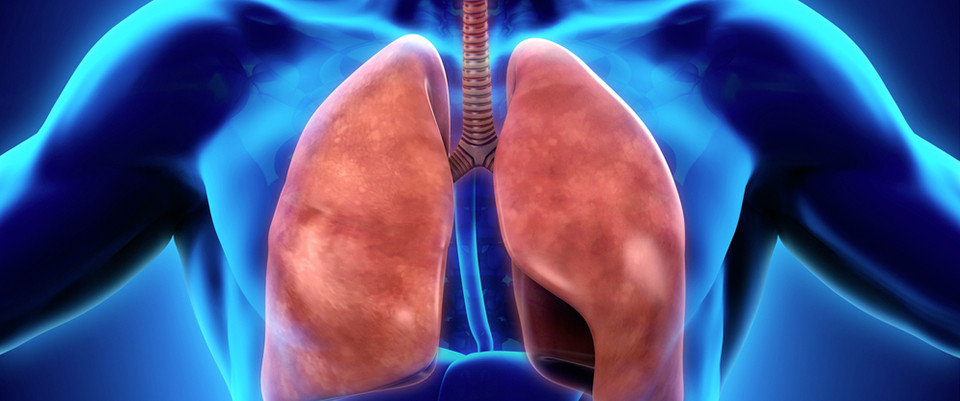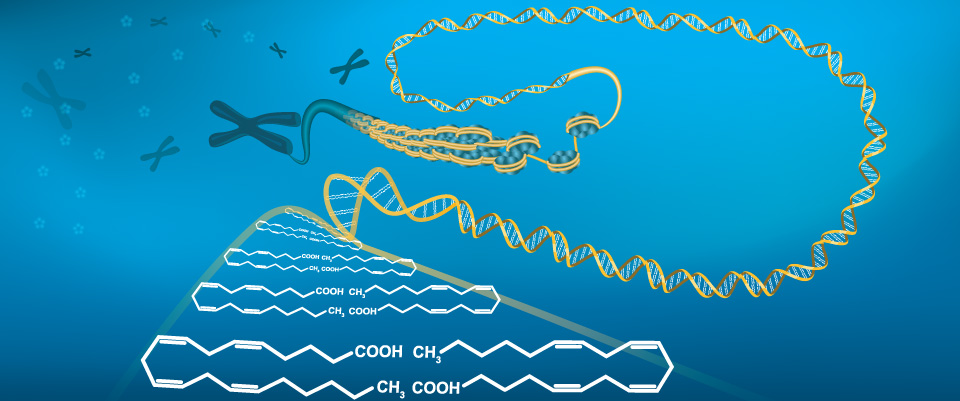PubMed
Metabolic responses in blood-stage malaria parasites associated with increased and decreased sensitivity to PfATP4 inhibitors
Malar J. 2023 Feb 14;22(1):56. doi: 10.1186/s12936-023-04481-x.ABSTRACTBACKGROUND: Spiroindolone and pyrazoleamide antimalarial compounds target Plasmodium falciparum P-type ATPase (PfATP4) and induce disruption of intracellular Na+ homeostasis. Recently, a PfATP4 mutation was discovered that confers resistance to a pyrazoleamide while increasing sensitivity to a spiroindolone. Transcriptomic and metabolic adaptations that underlie this seemingly contradictory response of P. falciparum to sublethal concentrations of each compound were examined to understand the different cellular accommodation to PfATP4 disruptions.METHODS: A genetically engineered P. falciparum Dd2 strain (Dd2A211V) carrying an Ala211Val (A211V) mutation in PfATP4 was used to identify metabolic adaptations associated with the mutation that results in decreased sensitivity to PA21A092 (a pyrazoleamide) and increased sensitivity to KAE609 (a spiroindolone). First, sublethal doses of PA21A092 and KAE609 causing substantial reduction (30-70%) in Dd2A211V parasite replication were identified. Then, at this sublethal dose of PA21A092 (or KAE609), metabolomic and transcriptomic data were collected during the first intraerythrocytic developmental cycle. Finally, the time-resolved data were integrated with a whole-genome metabolic network model of P. falciparum to characterize antimalarial-induced physiological adaptations.RESULTS: Sublethal treatment with PA21A092 caused significant (p < 0.001) alterations in the abundances of 91 Plasmodium gene transcripts, whereas only 21 transcripts were significantly altered due to sublethal treatment with KAE609. In the metabolomic data, a substantial alteration (≥ fourfold) in the abundances of carbohydrate metabolites in the presence of either compound was found. The estimated rates of macromolecule syntheses between the two antimalarial-treated conditions were also comparable, except for the rate of lipid synthesis. A closer examination of parasite metabolism in the presence of either compound indicated statistically significant differences in enzymatic activities associated with synthesis of phosphatidylcholine, phosphatidylserine, and phosphatidylinositol.CONCLUSION: The results of this study suggest that malaria parasites activate protein kinases via phospholipid-dependent signalling in response to the ionic perturbation induced by the Na+ homeostasis disruptor PA21A092. Therefore, targeted disruption of phospholipid signalling in PA21A092-resistant parasites could be a means to block the emergence of resistance to PA21A092.PMID:36788578 | DOI:10.1186/s12936-023-04481-x
Plasma lipidomic profiling reveals metabolic adaptations to pregnancy and signatures of cardiometabolic risk: a preconception and longitudinal cohort study
BMC Med. 2023 Feb 13;21(1):53. doi: 10.1186/s12916-023-02740-x.ABSTRACTBACKGROUND: Adaptations in lipid metabolism are essential to meet the physiological demands of pregnancy and any aberration may result in adverse outcomes for both mother and offspring. However, there is a lack of population-level studies to define the longitudinal changes of maternal circulating lipids from preconception to postpartum in relation to cardiometabolic risk factors.METHODS: LC-MS/MS-based quantification of 689 lipid species was performed on 1595 plasma samples collected at three time points in a preconception and longitudinal cohort, Singapore PREconception Study of long-Term maternal and child Outcomes (S-PRESTO). We mapped maternal plasma lipidomic profiles at preconception (N = 976), 26-28 weeks' pregnancy (N = 337) and 3 months postpartum (N = 282) to study longitudinal lipid changes and their associations with cardiometabolic risk factors including pre-pregnancy body mass index, body weight changes and glycaemic traits.RESULTS: Around 56% of the lipids increased and 24% decreased in concentration in pregnancy before returning to the preconception concentration at postpartum, whereas around 11% of the lipids went through significant changes in pregnancy and their concentrations did not revert to the preconception concentrations. We observed a significant association of body weight changes with lipid changes across different physiological states, and lower circulating concentrations of phospholipids and sphingomyelins in pregnant mothers with higher pre-pregnancy BMI. Fasting plasma glucose and glycated haemoglobin (HbA1c) concentrations were lower whereas the homeostatic model assessment of insulin resistance (HOMA-IR), 2-h post-load glucose and fasting insulin concentrations were higher in pregnancy as compared to both preconception and postpartum. Association studies of lipidomic profiles with these glycaemic traits revealed their respective lipid signatures at three physiological states. Assessment of glycaemic traits in relation to the circulating lipids at preconception with a large sample size (n = 936) provided an integrated view of the effects of hyperglycaemia on plasma lipidomic profiles. We observed a distinct relationship of lipidomic profiles with different measures, with the highest percentage of significant lipids associated with HOMA-IR (58.9%), followed by fasting insulin concentration (56.9%), 2-h post-load glucose concentration (41.8%), HbA1c (36.7%), impaired glucose tolerance status (31.6%) and fasting glucose concentration (30.8%).CONCLUSIONS: We describe the longitudinal landscape of maternal circulating lipids from preconception to postpartum, and a comprehensive view of trends and magnitude of pregnancy-induced changes in lipidomic profiles. We identified lipid signatures linked with cardiometabolic risk traits with potential implications both in pregnancy and postpartum life. Our findings provide insights into the metabolic adaptations and potential biomarkers of modifiable risk factors in childbearing women that may help in better assessment of cardiometabolic health, and early intervention at the preconception period.TRIAL REGISTRATION: ClinicalTrials.gov, NCT03531658.PMID:36782297 | DOI:10.1186/s12916-023-02740-x
A metabonomic study to explore potential markers of asymptomatic hyperuricemia and acute gouty arthritis
J Orthop Surg Res. 2023 Feb 13;18(1):96. doi: 10.1186/s13018-023-03585-z.ABSTRACTBACKGROUND: Acute gouty arthritis (AGA) is a metabolic disease with acute arthritis as its main manifestation. However, the pathogenesis of asymptomatic hyperuricemia (HUA) to AGA is still unclear, and metabolic markers are needed to early predict and diagnose. In this study, gas chromatography (GC)/liquid chromatography (LC)-mass spectrometry (MS) was used to reveal the changes of serum metabolites from healthy people to HUA and then to AGA, and to find the pathophysiological mechanism and biological markers.METHODS: Fifty samples were included in AGA, HUA, and healthy control group, respectively. The metabolites in serum samples were detected by GC/LC-MS. According to the statistics of pairwise grouping, the statistically significant differential metabolites were obtained by the combination of multidimensional analysis and one-dimensional analysis. Search the selected metabolites in KEGG database, determine the involved metabolic pathways, and draw the metabolic pathway map in combination with relevant literature.RESULTS: Using metabonomics technology, 23 different serum metabolic markers related to AGA and HUA were found, mainly related to uric acid metabolism and inflammatory response caused by HUA/AGA. Three of them are completely different from the previous gout studies, nine metabolites with different trends from conventional inflammation.CONCLUSIONS: In conclusion, we analyzed 150 serum samples from AGA, HUA, and healthy control group by GC/LC-MS to explore the changes of these differential metabolites and metabolic pathways, suggesting that the disease progression may involve the changes of biomarkers, which may provide a basis for disease risk prediction and early diagnosis.PMID:36782295 | DOI:10.1186/s13018-023-03585-z
Stress memory and its regulation in plants experiencing recurrent drought conditions
Theor Appl Genet. 2023 Feb 15;136(2):3. doi: 10.1007/s00122-023-04313-1.ABSTRACTDeveloping stress-tolerant plants continues to be the goal of breeders due to their realized yields and stability. Plant responses to drought have been studied in many different plant species, but the occurrence of stress memory as well as the potential mechanisms for memory regulation is not yet well described. It has been observed that plants hold on to past events in a way that adjusts their response to new challenges without altering their genetic constitution. This ability could enable training of plants to face future challenges that increase in frequency and intensity. A better understanding of stress memory-associated mechanisms leading to alteration in gene expression and how they link to physiological, biochemical, metabolomic and morphological changes would initiate diverse opportunities to breed stress-tolerant genotypes through molecular breeding or biotechnological approaches. In this perspective, this review discusses different stress memory types and gives an overall view using general examples. Further, focusing on drought stress, we demonstrate coordinated changes in epigenetic and molecular gene expression control mechanisms, the associated transcription memory responses at the genome level and integrated biochemical and physiological responses at cellular level following recurrent drought stress exposures. Indeed, coordinated epigenetic and molecular alterations of expression of specific gene networks link to biochemical and physiological responses that facilitate acclimation and survival of an individual plant during repeated stress.PMID:36788199 | DOI:10.1007/s00122-023-04313-1
Sympathetic nervous activation, mitochondrial dysfunction and outcome in acutely decompensated cirrhosis: the metabolomic prognostic models (CLIF-C MET)
Gut. 2023 Feb 14:gutjnl-2022-328708. doi: 10.1136/gutjnl-2022-328708. Online ahead of print.ABSTRACTBACKGROUND AND AIMS: Current prognostic scores of patients with acutely decompensated cirrhosis (AD), particularly those with acute-on-chronic liver failure (ACLF), underestimate the risk of mortality. This is probably because systemic inflammation (SI), the major driver of AD/ACLF, is not reflected in the scores. SI induces metabolic changes, which impair delivery of the necessary energy for the immune reaction. This investigation aimed to identify metabolites associated with short-term (28-day) death and to design metabolomic prognostic models.METHODS: Two prospective multicentre large cohorts from Europe for investigating ACLF and development of ACLF, CANONIC (discovery, n=831) and PREDICT (validation, n=851), were explored by untargeted serum metabolomics to identify and validate metabolites which could allow improved prognostic modelling.RESULTS: Three prognostic metabolites strongly associated with death were selected to build the models. 4-Hydroxy-3-methoxyphenylglycol sulfate is a norepinephrine derivative, which may be derived from the brainstem response to SI. Additionally, galacturonic acid and hexanoylcarnitine are associated with mitochondrial dysfunction. Model 1 included only these three prognostic metabolites and age. Model 2 was built around 4-hydroxy-3-methoxyphenylglycol sulfate, hexanoylcarnitine, bilirubin, international normalised ratio (INR) and age. In the discovery cohort, both models were more accurate in predicting death within 7, 14 and 28 days after admission compared with MELDNa score (C-index: 0.9267, 0.9002 and 0.8424, and 0.9369, 0.9206 and 0.8529, with model 1 and model 2, respectively). Similar results were found in the validation cohort (C-index: 0.940, 0.834 and 0.791, and 0.947, 0.857 and 0.810, with model 1 and model 2, respectively). Also, in ACLF, model 1 and model 2 outperformed MELDNa 7, 14 and 28 days after admission for prediction of mortality.CONCLUSIONS: Models including metabolites (CLIF-C MET) reflecting SI, mitochondrial dysfunction and sympathetic system activation are better predictors of short-term mortality than scores based only on organ dysfunction (eg, MELDNa), especially in patients with ACLF.PMID:36788015 | DOI:10.1136/gutjnl-2022-328708
High Dimensional Proteomics Identifies Organ Injury Patterns Associated with Outcomes in Human Trauma
J Trauma Acute Care Surg. 2023 Feb 13. doi: 10.1097/TA.0000000000003880. Online ahead of print.ABSTRACTINTRODUCTION: Severe traumatic injury with shock can lead to direct and indirect organ injury, however, tissue-specific biomarkers are limited in clinical panels. We utilized proteomic and metabolomic databases to identify organ injury patterns after severe injury in humans.METHODS: Plasma samples (times 0-, 24-, and 72-hours [h] after arrival to trauma center) from injured patients enrolled in two randomized prehospital trials were subjected to multiplexed proteomics (SomaLogic Inc.). Patients were categorized by outcome: Non-resolvers (died >72 h or required ≥7 days of critical care), Resolvers (survived to 30-days and required <7 days of critical care), and low injury severity score (ISS) controls. Established tissue-specific biomarkers were identified through a literature review and cross-referenced with tissue-specificity from the Human Protein Atlas. Untargeted plasma metabolomics (Metabolon Inc.), inflammatory mediators, and endothelial damage markers were correlated with injury biomarkers. Kruskal-Wallis/Mann-Whitney-U tests with false discovery rate correction assessed differences in biomarker expression across outcome groups (significance; P-value <0.1).RESULTS: Of 142 patients, 78 were Non-resolvers (median ISS = 30), 34 Resolvers (median ISS = 22), and 30 low ISS controls (median ISS = 1). A broad release of tissue-specific damage markers was observed at admission; this was greater in Non-resolvers. By 72 h, 9 cardiac, 3 liver, 8 neurologic, and 3 pulmonary proteins remained significantly elevated in Non-resolvers compared to Resolvers. Cardiac damage biomarkers showed the greatest elevations at 72 h in Non-resolvers and had significant positive correlations with pro-inflammatory mediators and endothelial damage markers. Non-resolvers had lower concentrations of fatty acid metabolites compared to Resolvers, particularly acyl carnitines and cholines.CONCLUSIONS: We identified an immediate release of tissue-specific biomarkers with sustained elevation in the liver, pulmonary, neurologic, and especially cardiac injury biomarkers in patients with complex clinical courses after severe injury. The persistent myocardial injury in Non-resolvers may be due to a combination of factors including metabolic stress, inflammation, and endotheliopathy.STUDY TYPE: Level III, Prognostic/Epidemiological.PMID:36787435 | DOI:10.1097/TA.0000000000003880
The lipidomes of <em>C. elegans</em> with mutations in <em>asm-3</em>/acid sphingomyelinase and <em>hyl-2</em>/ceramide synthase show distinct lipid profiles during aging
Aging (Albany NY). 2023 Feb 13;15. doi: 10.18632/aging.204515. Online ahead of print.ABSTRACTLipid metabolism affects cell and physiological functions that mediate animal healthspan and lifespan. Lipidomics approaches in model organisms have allowed us to better understand changes in lipid composition related to age and lifespan. Here, using the model C. elegans, we examine the lipidomes of mutants lacking enzymes critical for sphingolipid metabolism; specifically, we examine acid sphingomyelinase (asm-3), which breaks down sphingomyelin to ceramide, and ceramide synthase (hyl-2), which synthesizes ceramide from sphingosine. Worm asm-3 and hyl-2 mutants have been previously found to be long- and short-lived, respectively. We analyzed longitudinal lipid changes in wild type animals compared to mutants at 1-, 5-, and 10-days of age. We detected over 700 different lipids in several lipid classes. Results indicate that wildtype animals exhibit increased triacylglycerols (TAG) at 10-days compared to 1-day, and decreased lysophoshatidylcholines (LPC). We find that 10-day hyl-2 mutants have elevated total polyunsaturated fatty acids (PUFA) and increased LPCs compared to 10-day wildtype animals. These changes mirror another short-lived model, the daf-16/FOXO transcription factor that is downstream of the insulin-like signaling pathway. In addition, we find that hyl-2 mutants have poor oxidative stress response, supporting a model where mutants with elevated PUFAs may accumulate more oxidative damage. On the other hand, 10-day asm-3 mutants have fewer TAGs. Intriguingly, asm-3 mutants have a similar lipid composition as the long-lived, caloric restriction model eat-2/mAChR mutant. Together, these analyses highlight the utility of lipidomic analyses to characterize metabolic changes during aging in C. elegans.PMID:36787434 | DOI:10.18632/aging.204515
Identification of a Novel Strain <em>Lactobacillus Reuteri</em> and Anti-Obesity Effect through Metabolite Indole-3-Carboxaldehyde in Diet-Induced Obese Mice
J Agric Food Chem. 2023 Feb 14. doi: 10.1021/acs.jafc.2c05764. Online ahead of print.ABSTRACTThe potentially beneficial effects of probiotics in the treatment of obesity have been generally demonstrated. In the present study, a new strain of Lactobacillus reuteri SY523 (L. reuteri SY523) with an anti-obesity effect was isolated from the fecal microbiota of diet-induced obese mice. Untargeted metabolomics analysis of mice serum showed that the significantly differential metabolite indole-3-carboxaldehyde (3-IAId) was markedly elevated in the L. reuteri SY523-treated group, and interestingly, the abundance of 3-IAId was significantly negatively associated with obesity-related indicators. As expected, in the HepG2 cell induced by free fatty acids, the potential activity of 3-IAId in restraining lipid deposition was verified. Further, we found that 3-IAId was involved in the anti-obesity effect of L. reuteri SY523 mainly via regulating the cGMP/cAMP signaling pathway. The highlight of this study lies in clarifying the pivotal role of metabolite 3-IAId in the anti-obesity effect induced by L. reuteri SY523, which is conducive to the development of probiotics for anti-obesity agents.PMID:36786753 | DOI:10.1021/acs.jafc.2c05764
Global Metabolomic Profiling of Host Red Blood Cells Infected with Babesia divergens Reveals Novel Antiparasitic Target Pathways
Microbiol Spectr. 2023 Feb 14:e0468822. doi: 10.1128/spectrum.04688-22. Online ahead of print.ABSTRACTBabesia divergens is an apicomplexan parasite that infects human red blood cells (RBCs), initiating cycles of invasion, replication, and egress, resulting in extensive metabolic modification of the host cells. Babesia is an auxotroph for most of the nutrients required to sustain these cycles. There are currently limited studies on the biochemical pathways that support these critical processes, necessitating the high-resolution global metabolomics approach described here to uncover the metabolic interactions between parasite and host RBC. Our results reveal an extensive parasite-mediated modulation of RBC metabolite levels of all classes, including lipids, amino acids, carbohydrates, and nucleotides, with numerous metabolic species varying in proportion to the level of infection. Many of these molecules are scavenged from the host RBCs. This is in accord with the needs of a rapidly proliferating parasite with limited biosynthetic capabilities. Probing these pathways in depth, we used growth inhibition assays to quantitate parasite susceptibility to drugs targeting these pathways and stimulated emission depletion (STED) microscopy to obtain high-resolution images of drug-treated parasites to correlate changes in morphology with specific metabolic blocks in order to validate the data generated by the untargeted metabolomics platform. Thus, interruption of cholesterol scavenging from the host cell led to premature parasite egress, while chemical targeting of the hydrolysis of acyl glycerides led to the buildup of malformed parasites that could not successfully egress. This is the first report detailing the global metabolomic profile of the B. divergens-infected RBC. Besides deciphering diverse aspects of the host-parasite relationship, our results can be exploited by others to uncover further drug targets in the host-parasite biochemical network. IMPORTANCE Human babesiosis is caused by apicomplexan parasites of the Babesia genus and is associated with transfusion-transmitted illness and relapsing disease in immunosuppressed populations. Through its continuous cycles of invasion, proliferation, and egress, B. divergens radically changes the metabolic environment of the host red blood cell, allowing us opportunities to study potential chemical vulnerabilities that can be targeted by drugs. This is the first global metabolomic profiling of Babesia-infected human red blood cells, and our analysis revealed perturbation in all biomolecular classes at levels proportional to the level of infection. In particular, lipids and energy flux pathways in the host cell were altered by infection. We validated the changes in key metabolic pathways by performing inhibition assays accompanied by high-resolution microscopy. Overall, this global metabolomics analysis of Babesia-infected red blood cells has helped to uncover novel aspects of parasite biology and identified potential biochemical pathways that can be targeted for chemotherapeutic intervention.PMID:36786651 | DOI:10.1128/spectrum.04688-22
Effect of <em>Epichloë gansuensis</em> Endophyte on Seed-Borne Microbes and Seed Metabolites in <em>Achnatherum inebrians</em>
Microbiol Spectr. 2023 Feb 14:e0135022. doi: 10.1128/spectrum.01350-22. Online ahead of print.ABSTRACTThe seed-borne microbiota and seed metabolites of the grass Achnatherum inebrians, either host to Epichloë gansuensis (endophyte infected [EI]) or endophyte free (EF), were investigated. This study determined the microbial communities both within the seed (endophytic) and on the seed surface (epiphytic) and of the protective glumes by using Illumina sequencing technology. Epichloë gansuensis decreased the richness of the seed-borne microbiota except for the epiphytic fungi of glumes and also decreased the diversity of seed-borne microbiota. In addition, metabolites of seeds and glumes were detected using liquid chromatography-mass spectrometry (LC-MS). Unlike with the seeds of EF plants, the presence of E. gansuensis resulted in significant changes in the content of 108 seed and 31 glume metabolites. A total of 319 significant correlations occurred between seed-borne microbiota and seed metabolites; these correlations comprised 163 (147 bacterial and 16 fungal) positive correlations and 156 (136 bacterial and 20 fungal) negative correlations. Meanwhile, there were 42 significant correlations between glume microbiota and metabolites; these correlations comprised 28 positive (10 bacterial and 18 fungal) and 14 negative (9 bacterial and 5 fungal) correlations. The presence of E. gansuensis endophyte altered the communities and diversities of seed-borne microbes and altered the composition and content of seed metabolites, and there were many close and complex relationships between microbes and metabolites. IMPORTANCE The present study was to investigate seed-borne microbiota and seed metabolites in Achnatherum inebrians using high-throughput sequencing and LC-MS technology. Epichloë gansuensis decreased the richness of the seed-borne microbiota except for the epiphytic fungi of glumes and also decreased the diversity of seed-borne microbiota. Compared with endophyte-free plants, the content of 108 seed and 31 glume metabolites of endophyte-infected plants was significantly changed. There were 319 significant correlations between seed-borne microbiota and seed metabolites and 42 significant correlations between glume microbiota and metabolites.PMID:36786621 | DOI:10.1128/spectrum.01350-22
Amino Acid Availability Determines Plant Immune Homeostasis in the Rhizosphere Microbiome
mBio. 2023 Feb 14:e0342422. doi: 10.1128/mbio.03424-22. Online ahead of print.ABSTRACTMicrobes possess conserved microbe-associated molecular patterns (MAMPs) that are recognized by plant receptors to induce pattern-triggered immunity (PTI). Despite containing the same MAMPs as pathogens, commensals thrive in the plant rhizosphere microbiome, indicating they must suppress or evade host immunity. Previous work found that bacterial-secreted gluconic acid is sufficient to suppress PTI. Here, we show that gluconic acid biosynthesis is not necessary for immunity suppression by the beneficial bacterial strain Pseudomonas simiae WCS417. We performed a forward genetic screen with EMS-mutagenized P. simiae WCS417 and a flagellin-inducible CYP71A12pro:GUS reporter as a PTI readout. We identified a loss of function mutant in ornithine carbamoyltransferase argF, which is required for ornithine conversion to arginine, that cannot suppress PTI or acidify the rhizosphere. Fungal pathogens use alkalization through production of ammonia and glutamate, and arginine biosynthetic precursors, to promote their own growth and virulence. While a ΔargF mutant has a growth defect in the rhizosphere, we found that restoring growth with exogenous arginine resulted in rhizosphere alkalization in a mutant that cannot make gluconic acid, indicating that arginine biosynthesis is required for both growth and acidification. Furthermore, blocking bacterial arginine, glutamine, or proline biosynthesis through genetic mutations or feedback inhibition by adding corresponding amino acids, resulted in rhizosphere alkalization. Untargeted metabolomics determined that ornithine, an alkaline molecule, accumulates under conditions associated with rhizosphere alkalization. Our findings show that bacterial amino acid biosynthesis contributes to acidification by preventing accumulation of ornithine and the resulting alkalization. IMPORTANCE Understanding how microbiota evade and suppress host immunity is critical to our knowledge of how beneficial microbes persist in association with a host. Prior work has shown that secretion of organic acids by beneficial microbes is sufficient to suppress plant immunity. This work shows that microbial amino acid metabolism is not only critical for growth in the plant rhizosphere microbiome, but also for regulation of plant rhizosphere pH, and, consequentially, regulation of plant immunity. We found that, in the absence of microbial glutamate and arginine metabolism, rhizosphere alkalization and microbial overgrowth occurs. Collectively, our findings suggest that, by regulating nutrient availability, plants have the potential to regulate their immune homeostasis in the rhizosphere microbiome.PMID:36786577 | DOI:10.1128/mbio.03424-22
AoSte12 Is Required for Mycelial Development, Conidiation, Trap Morphogenesis, and Secondary Metabolism by Regulating Hyphal Fusion in Nematode-Trapping Fungus <em>Arthrobotrys oligospora</em>
Microbiol Spectr. 2023 Feb 14:e0395722. doi: 10.1128/spectrum.03957-22. Online ahead of print.ABSTRACTNematode-trapping (NT) fungi are a unique group of carnivorous microorganisms that can capture and digest nematodes by producing ingenious trapping devices (traps). Arthrobotrys oligospora, a representative NT fungus, can develop adhesive three-dimensional networks for nematode predation. Hyphal fusion is indispensable for the trap formation of A. oligospora. Here, we characterized an orthologous Ste12 protein (AoSte12) in A. oligospora via gene disruption, DNA affinity purification sequencing (DAP-Seq), and multi-omics approaches. The disruption of the Aoste12 gene caused an increase in hyphal fusion and resulted in defects in mycelial growth, conidiation, trap morphology, and stress resistance, as well as reducing the number of nuclei and lipid droplet accumulation. Moreover, transcriptome and DAP-Seq analysis revealed that AoSte12 was involved in cellular processes associated with growth, cell fusion, the tricarboxylic acid cycle, vesicles, actin filaments, and lipid metabolism. In addition, combining metabolome with transcriptome and DAP-Seq analysis indicated that AoSte12 was involved in the mitogen-activated protein kinase signaling pathway, lipid metabolism, and secondary metabolites. A yeast two-hybrid assay revealed that AoSte12 can interact with diverse proteins, such as the MAK-2 orthologue protein Fus3, the vacuolar sorting protein Pep3, and UDP-glycosyltransferase. Our results suggest that AoSte12 plays an indispensable role in hyphal fusion and thus regulates sporulation and trap morphogenesis. These results provide deep insights into the connection between hyphal fusion and trap formation in NT fungi. IMPORTANCE Nematode-trapping (NT) fungi are an important natural enemy of nematodes and can capture their prey by producing traps. Hyphal anastomosis and fusion are important for mycelial growth and the colony morphological development of filamentous fungi and are also crucial for the trap morphogenesis of NT fungi. Arthrobotrys oligospora can form complex three-dimensional networks (traps) when sensing the presence of nematodes. This study revealed that AoSte12 is indispensable for hyphal fusion and that it regulates mycelial growth, conidiation, trap morphogenesis, stress resistance, the number of nuclei, and lipid droplet accumulation in A. oligospora. In addition, DNA affinity purification sequencing, transcriptome, and metabolome analyses further revealed that AoSte12 is involved in the mitogen-activated protein kinase pathway, lipid metabolism, and secondary metabolism. Overall, these findings expand the important role of AoSte12 in NT fungus A. oligospora and provide a broad foundation for elucidating the regulatory mechanism of trap development and the lifestyle transitions of pathogenic fungi.PMID:36786575 | DOI:10.1128/spectrum.03957-22
Integration of transcriptomics and metabolomics to reveal the effect of ginsenoside Rg3 on allergic rhinitis in mice
Food Funct. 2023 Feb 14. doi: 10.1039/d2fo03885d. Online ahead of print.ABSTRACTIncreasing studies have demonstrated that ginsenoside Rg3 (Rg3) plays an important role in the prevention and treatment of various diseases, including allergic lower airway inflammation such as asthma. To investigate the role of Rg3 in allergic upper airway disease, the effect and therapeutic mechanism of Rg3 in allergic rhinitis (AR) were studied. Ovalbumin-induced AR model mice were intragastrically administered with Rg3. Nasal symptoms, levels of IgE, IL-4, IL-5, IL-13, SOD and MDA in serum, and histopathological analysis of nasal mucosa were used to evaluate the effect of Rg3 on ameliorating AR in mice. Moreover, nasal mucosa samples from the normal control group, AR model group and high dosage of Rg3 were collected to perform omics analysis. The differentially expressed genes and significantly changed metabolites were screened based on transcriptomics and metabolomics analyses, respectively. Integrative analysis was further performed to confirm the hub genes, metabolites and pathways. After Rg3 intervention, the nasal symptoms and inflammatory infiltration were effectively improved, the levels of IgE, IL-4, IL-5, IL-13 and MDA were significantly reduced, and the level of SOD was obviously increased. The results of the qRT-PCR assay complemented the transcriptomic findings. Integrated analysis showed that Rg3 played an anti-AR role mainly by regulating the interaction network, which was constructed by 12 genes, 8 metabolites and 4 pathways. Our findings suggested that Rg3 had a therapeutic effect on ovalbumin-induced AR in mice by inhibiting inflammation development and reducing oxidative stress. The present study could provide a potential natural agent for the treatment of AR.PMID:36786409 | DOI:10.1039/d2fo03885d
DBDIpy: a Python library for processing of untargeted datasets from real-time plasma ionization mass spectrometry
Bioinformatics. 2023 Feb 14:btad088. doi: 10.1093/bioinformatics/btad088. Online ahead of print.ABSTRACTMOTIVATION: Plasma ionization is rapidly gaining popularity for MS based studies of volatiles and aerosols. However, data from plasma ionization is delicate to interpret as competing ionization pathways in the plasma create numerous ion species. There is no tool for detection of adducts and in-source fragments from plasma ionization data yet, which makes data evaluation ambiguous.SUMMARY: We developed DBDIpy, a Python library for processing and formal analysis of untargeted, time-sensitive plasma ionization MS datasets. Its core functionality lies in the identification of in-source fragments and identification of rivaling ionization pathways of the same analytes in time-sensitive datasets. It further contains elementary functions for processing of untargeted metabolomics data and interfaces to an established ecosystem for analysis of MS data in Python.AVAILABILITY AND IMPLEMENTATION: DBDIpy is implemented in Python (Version ≥ 3.7) and can be downloaded from PyPI the Python package repository (https://pypi.org/project/DBDIpy) or from GitHub (https://github.com/leopold-weidner/DBDIpy).PMID:36786403 | DOI:10.1093/bioinformatics/btad088
Some OPA once told me "LKB1 is going to rule me": the OPA1-LKB1 axis in immune response
Allergy. 2023 Feb 13. doi: 10.1111/all.15672. Online ahead of print.NO ABSTRACTPMID:36785923 | DOI:10.1111/all.15672
Metabolomics Profiling of Age-Associated Metabolites in Malay Population
Oxid Med Cell Longev. 2023 Feb 4;2023:4416410. doi: 10.1155/2023/4416410. eCollection 2023.ABSTRACTAging is a complex process characterized by progressive loss of functional abilities due to the accumulation of molecular damages. Metabolomics could offer novel insights into the predictors and mechanisms of aging. This cross-sectional study is aimed at identifying age-associated plasma metabolome in a Malay population. A total of 146 (90 females) healthy participants aged 28-69 were selected for the study. Untargeted metabolomics profiling was performed using liquid chromatography-tandem mass spectrometry. Association analysis was based on the general linear model. Gender-associated metabolites were adjusted for age, while age-associated metabolites were adjusted for gender or analyzed in a gender-stratified manner. Gender-associated metabolites such as 4-hydroxyphenyllactic acid, carnitine, cortisol, and testosterone sulfate showed higher levels in males than females. Deoxycholic acid and hippuric acid were among the metabolites with a positive association with age after being adjusted for gender, while 9(E),11(E)-conjugated linoleic acid, cortisol, and nicotinamide were negatively associated with age. In gender-stratified analysis, glutamine was one of the common metabolites that showed a direct association with age in both genders, while metabolites such as 11-deoxy prostaglandin F2β, guanosine monophosphate, and testosterone sulfate were inversely associated with age in males and females. This study reveals several age-associated metabolites in Malays that could reflect the changes in metabolisms during aging and may be used to discern the risk of geriatric syndromes and disorders later. Further studies are required to determine the interplay between these metabolites and environmental factors on the functional outcomes during aging.PMID:36785791 | PMC:PMC9922189 | DOI:10.1155/2023/4416410
Integrated metabolomic and transcriptomic analysis reveal the effect of mechanical stress on sugar metabolism in tea leaves (<em>Camellia sinensis</em>) post-harvest
PeerJ. 2023 Feb 8;11:e14869. doi: 10.7717/peerj.14869. eCollection 2023.ABSTRACTSugar metabolites not only act as the key compounds in tea plant response to stress but are also critical for tea quality formation during the post-harvest processing of tea leaves. However, the mechanisms by which sugar metabolites in post-harvest tea leaves respond to mechanical stress are unclear. In this study, we aimed to investigate the effects of mechanical stress on saccharide metabolites and related post-harvest tea genes. Withered (C15) and mechanically-stressed (V15) for 15 min Oolong tea leaves were used for metabolome and transcriptome sequencing analyses. We identified a total of 19 sugar metabolites, most of which increased in C15 and V15. A total of 69 genes related to sugar metabolism were identified using transcriptome analysis, most of which were down-regulated in C15 and V15. To further understand the relationship between the down-regulated genes and sugar metabolites, we analyzed the sucrose and starch, galactose, and glycolysis metabolic pathways, and found that several key genes of invertase (INV), α-amylase (AMY), β-amylase (BMY), aldose 1-epimerase (AEP), and α-galactosidase (AGAL) were down-regulated. This inhibited the hydrolysis of sugars and might have contributed to the enrichment of galactose and D-mannose in V15. Additionally, galactinol synthase (Gols), raffinose synthase (RS), hexokinase (HXK), 6-phosphofructokinase 1 (PFK-1), and pyruvate kinase (PK) genes were significantly upregulated in V15, promoting the accumulation of D-fructose-6-phosphate (D-Fru-6P), D-glucose-6-phosphate (D-glu-6P), and D-glucose. Transcriptome and metabolome association analysis showed that the glycolysis pathway was enhanced and the hydrolysis rate of sugars related to hemicellulose synthesis slowed in response to mechanical stress. In this study, we explored the role of sugar in the response of post-harvest tea leaves to mechanical stress by analyzing differences in the expression of sugar metabolites and related genes. Our results improve the understanding of post-harvest tea's resistance to mechanical stress and the associated mechanism of sugar metabolism. The resulting treatment may be used to control the quality of Oolong tea.PMID:36785711 | PMC:PMC9921968 | DOI:10.7717/peerj.14869
In organello real-time NMR metabolomics of mitochondria: An S. cerevisiae model of Barth syndrome displays perturbed metabolism
Biophys J. 2023 Feb 10;122(3S1):93a-94a. doi: 10.1016/j.bpj.2022.11.702.NO ABSTRACTPMID:36785094 | DOI:10.1016/j.bpj.2022.11.702
Metabolome of flue-cured tobacco is significantly affected by the presence of leaf stem
BMC Plant Biol. 2023 Feb 13;23(1):89. doi: 10.1186/s12870-023-04093-2.ABSTRACTBACKGROUND: Leaves of tobacco (Nicotiana tabacum L.) are flue-cured to use as a key industrial supply in various parts of the world. The quality of tobacco leaves is dependent on chemical components and their proportions. Generally, the stem attached to tobacco leaf is detached before curing. However, the leaf stem remains green for an extended period of time (as compared to leaf) during flue-curing. Hence, it is expected to affect the quality of tobacco's final product.RESULTS: To understand the impact of the green stem of leaf on the metabolome of flue-cured tobacco, we employed a broad targeted metabolomics approach. We selected two tobacco cultivars (Yun87 and K326) and cultivated them in five geographic locations in China. For flue-curing, leaves were harvested without a stem (L) or with an attached stem (SPL). After metabolome analysis, a total of 1027 metabolites were annotated in these samples. A variable number of metabolites were differentially accumulated between both types of leaves (depending on geographic location or cultivar) representing an influence of environment or genotype. Interestingly, only 68 metabolites were differentially accumulated between L and SPL samples irrespective of the cultivar or geographic location. These differentially accumulated metabolites belonged to major groups of primary and secondary metabolites. We have discussed the importance of identified metabolites in terms of carbon, nitrogen, and polyphenolic metabolism.CONCLUSION: The present research is the first comprehensive description of several metabolites in tobacco leaves related to the contribution of leaf stem. The current study opens novel prospects for investigating the potential of such metabolites in improving the quality of flue-cured tobacco.PMID:36782114 | DOI:10.1186/s12870-023-04093-2
Diagnostic and Prognostic Biomarkers Reflective of Cardiac Remodelling in Diabetes Mellitus: A Scoping Review
Diabet Med. 2023 Feb 13:e15064. doi: 10.1111/dme.15064. Online ahead of print.ABSTRACTOBJECTIVE: The objective of this scoping review is to evaluate the current biomarkers used in the assessment of adverse cardiac remodelling in people with diabetes mellitus (DM) and in the prognosis of subsequent cardiovascular disease. We aim to discuss the biomarkers' pathophysiological roles as a reflection of the cardiac remodelling mechanisms in the presence of DM.REVIEW METHODS AND DATA SOURCES: We performed the literature search from June to September 2021 using the following databases: MEDLINE, Scopus, Web of Science, PubMed, and Cochrane library. Articles that met our inclusion criteria were screened and appraised before being included in this review. The PRISMA guidelines for Scoping Reviews were followed.RESULTS: Our literature search identified a total of 43 eligible articles, which were included in this scoping review. We identified 15 different biomarkers that were used to determine signs of cardiac remodelling in cardiovascular disease (CVD) and people with DM. NT-proBNP was identified as the most frequently employed biomarker in this context, however we also identified emerging biomarkers including hs-CRP, hs-cTnT, and Galectin-3.CONCLUSIONS: There is a complex relationship between DM and cardiovascular health, where more research is needed. Current biomarkers reflective of adverse cardiac remodelling in DM are often used to diagnose other CVDs, such as NT-proBNP for heart failure. Hence there is a need for identification of specific biomarkers that can detect early signs of cardiac remodelling. Further research into these biomarkers and mechanisms can deepen our understanding on their role in DM-associated CVD and lead to better preventative therapies.PMID:36782075 | DOI:10.1111/dme.15064











